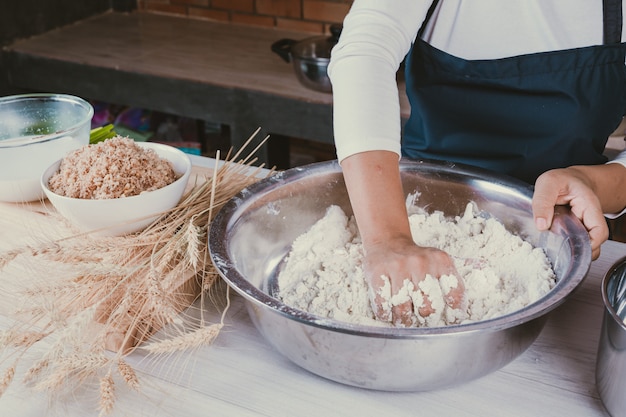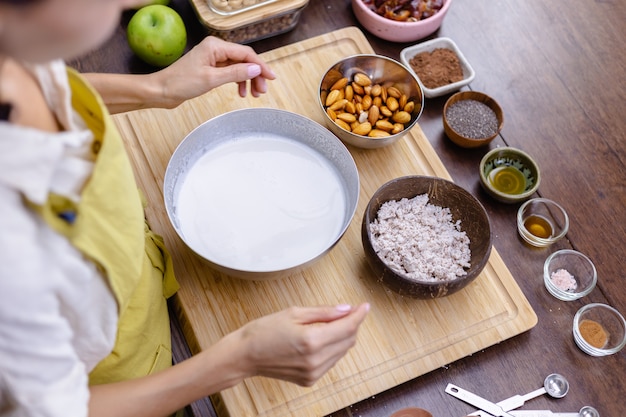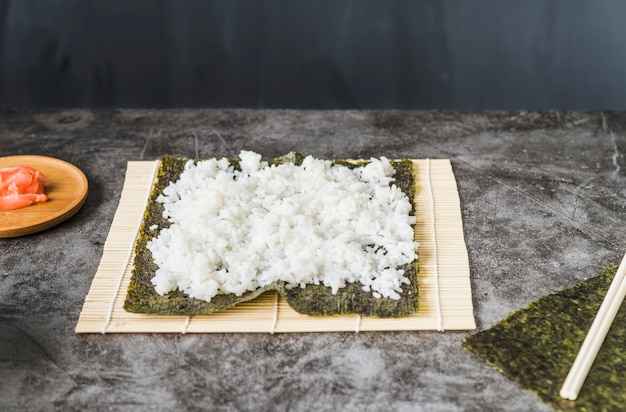Part 1: Understanding the Basics

The Different types of rice: A World of Choice
First things first, you need to know your rice. There's a whole world of choices out there, each with its own unique characteristics and cooking times.white rice is the most common, the one we're all familiar with. It's usually the cheapest option, cooks quickly, and absorbs flavour beautifully.
Then there's brown rice, the whole grain version. It's packed with nutrients and has a lovely nutty flavour, but it takes a bit longer to cook than white rice.
long grain rice, like Basmati, is known for its fluffy, separate grains. It cooks up light and airy, perfect for Indian dishes. short grain rice, like sushi rice, is stickier. This stickiness is what makes it ideal for sushi, holding the ingredients together perfectly.
Finally, there's wild rice. It's not actually rice at all, but the seed of a specific type of grass. It's got a distinctive nutty flavour and a chewy texture, adding a delightful twist to any dish.
The Golden Ratio: The Key to Perfect Rice
Once you've chosen your rice, the next essential piece of the puzzle is the ratio of rice to water. This is crucial for getting that perfectly cooked rice, the kind that's fluffy and not mushy or hard.The standard ratio is often 1:2, meaning one cup of rice to two cups of water. However, this can vary depending on the type of rice and your personal preference.
White rice, for example, typically requires a 1:1.5 ratio, while brown rice might need a 1:2.5 ratio.
Don't worry, we'll get into the specific ratios for different rice types later in the guide. For now, just remember that this ratio is your guiding star for delicious rice.
Part 2: The Stovetop Method: A Classic Approach

Essential Equipment: Gather Your Tools
Let's start with the classic method, the one we all learned at some point in our lives, the stovetop method. It's simple, satisfying, and allows you to watch the magic unfold right before your eyes.For this method, you'll need a few basic tools:
- A medium saucepan with a lid. Make sure it's big enough to hold your chosen quantity of rice.
- A measuring cup. This is crucial for getting the rice-to-water ratio right.
- A wooden spoon or spatula. You'll need this for stirring and fluffing the rice.
- A fine-mesh sieve. This is for rinsing your rice, a step that helps to remove excess starch and prevent sticking.
The Step-by-Step Guide to Stovetop Rice Perfection
Now, let's dive into the actual cooking process. This step-by-step guide will walk you through the magic of stovetop rice cooking.- Rinse the rice: This is the first step, and it's essential for achieving fluffy rice. Pour the rice into your sieve and run cold water over it until the water runs clear. This removes excess starch, which can make your rice sticky.
- Combine rice and water: Place your rinsed rice in your saucepan. Now, it's time to measure out the right amount of water, using the ratio we discussed earlier, and add it to the rice. You can add a pinch of salt if you like, but it's not essential.
- Bring to a boil: Place the saucepan on the stovetop over medium-high heat. Bring the water to a rolling boil, then cover the pan with a lid. This traps the steam, allowing the rice to cook evenly.
- Simmer and steam: Once the water is boiling, reduce the heat to low and simmer for about 15-20 minutes, or until the rice has absorbed all the water. Don’t lift the lid during this time. Let the rice steam and absorb the moisture without interruption.
- Rest and fluff: After the rice is cooked, remove it from the heat and let it rest, covered, for about 5 minutes. This allows the rice to continue steaming and absorb any remaining moisture. Then, use a fork to fluff the rice, gently separating the grains to make it light and airy.
Tips for Success: Mastering the Stovetop Method
Here are a few extra tips to help you perfect your stovetop rice cooking skills:- Use cold water: Cold water allows for more even cooking, ensuring that every grain of rice is perfectly cooked.
- Don't stir: Resist the urge to stir the rice while it's cooking. Stirring can break the rice grains, making them mushy. Let the rice cook undisturbed.
- Check the rice: After 15 minutes of cooking, you can gently lift the lid to check the rice. If the water has been absorbed, and the rice looks fluffy and cooked through, you're ready to go. If not, continue cooking for a few more minutes.
- Adjust the cooking time: Cooking times can vary depending on the type of rice, altitude, and your stove. If you live in a higher altitude, you might need to add a few extra minutes to the cooking time.
Part 3: Exploring Different rice varieties: A culinary journey

White Rice: The Classic Choice
White rice is the most basic and versatile type of rice. It's affordable, readily available, and cooks quickly.For white rice, the ideal ratio is usually 1:1.5, meaning one cup of rice to one and a half cups of water. The cooking time is typically around 15 minutes, but it's always best to check for doneness.
Brown Rice: The Healthier Option
If you're looking for a healthier option, brown rice is your go-to. It's a whole grain, packed with nutrients, and has a nutty flavour that adds a delicious dimension to your dishes.The ratio for brown rice is 1:2, one cup of rice to two cups of water. It needs a bit more time to cook, around 40-45 minutes on the stovetop. However, you can also use the pressure cooker method for a quicker cooking time.
basmati rice: A Long Grain Delight
Basmati rice is a favourite for many. Its long, slender grains become fluffy and separate when cooked, making it perfect for Indian dishes and other flavourful preparations.For Basmati rice, the ratio is 1:1.5, and the cooking time is around 15-20 minutes.
Sushi Rice: The Sticky Star
Short grain rice, like sushi rice, is known for its stickiness. This stickiness is essential for sushi, as it holds the ingredients together perfectly.The ratio for sushi rice is 1:1, meaning one cup of rice to one cup of water. You'll also need to add a little bit of rice vinegar for seasoning and to further enhance the stickiness of the rice.
Wild Rice: The Nutty Surprise
Wild rice, though not technically rice, is a popular choice for its distinct nutty flavour and chewy texture. It's a fantastic alternative to traditional rice.Wild rice needs a lot of water, a ratio of 1:4, meaning one cup of rice to four cups of water. It takes about 45 minutes to cook.
Here's a handy table summarizing the key details for each rice type:
| Type of Rice | Ratio (Rice to Water) | Cooking Time |
|---|---|---|
| White Rice | 1:1.5 | 15-20 minutes |
| Brown Rice | 1:2 | 40-45 minutes |
| Basmati Rice | 1:1.5 | 15-20 minutes |
| Sushi Rice | 1:1 | 15-20 minutes |
| Wild Rice | 1:4 | 45 minutes |
Part 4: Beyond the Stovetop: Exploring Other Methods
The Pressure Cooker Method: Speed and Efficiency
If you're looking for a quicker way to cook rice, a pressure cooker is your best friend. It significantly reduces cooking time, especially for brown rice.For brown rice, the ratio is still 1:2, but the cooking time drops to just 15 minutes, compared to 40-45 minutes on the stovetop.
The rice cooker: Effortless Perfection
Rice cookers are practically designed for perfect rice, making cooking rice incredibly easy. They take the guesswork out of the whole process.Simply add your rice, water, and press the button. The rice cooker does the rest, automatically adjusting the cooking time and temperature for different types of rice.
The oven method: A Different Approach
You can even cook rice in the oven! It's a great option for larger batches of rice and allows you to cook other things in the oven at the same time.The ratio is the same as for stovetop cooking, but the cooking time is around 45-50 minutes. Place the rice and water in an oven-safe dish, cover it tightly, and bake until the rice is cooked through.
Part 5: The Art of Rice Storage: Keeping It Fresh and Delicious
Storing Cooked Rice: Maintaining Freshness
Once you've cooked your perfect rice, you need to store it properly to keep it fresh and delicious.The best method is to store cooked rice in an airtight container in the refrigerator. It will stay good for up to 3-4 days.
You can also freeze cooked rice for longer storage. Let it cool completely before freezing and use it within 2-3 months.
Reheating Cooked Rice: Achieving Flavorful Results
When it's time to eat, you can reheat your rice in the microwave or on the stovetop.For the microwave, transfer the rice to a microwave-safe dish and heat it on high for about 30 seconds to a minute, or until it's warmed through.
For the stovetop, add the rice to a saucepan with a little bit of water or broth, and heat it over medium heat, stirring occasionally, until it's warmed through.
Part 6: Beyond the Basics: Variations and Flavours
Flavouring Your Rice: A culinary adventure
Let's talk about ways to elevate your rice game and add a touch of flavour to your dishes.Experiment with herbs like parsley or cilantro, spices like cumin or turmeric, or a squeeze of lemon juice. You can even stir in chopped vegetables like peas, carrots, or corn.
Rice Dishes: Inspiration Galore
Rice is a blank canvas for culinary creativity. You can turn it into so many delicious dishes.Here are a few ideas to get you started:
- rice pilaf: This classic rice dish is often flavoured with herbs, spices, and vegetables. It's simple to make and incredibly versatile.
- fried rice: This popular Asian dish is made with cooked rice, vegetables, eggs, and soy sauce. It's a great way to use up leftover rice and is a delicious and satisfying meal.
- rice pudding: This sweet and comforting dessert is made with rice, milk, sugar, and spices. It's a perfect way to end a meal.
- Arroz con pollo: This beloved Spanish dish features chicken, rice, vegetables, and saffron. It's a hearty and flavourful meal that's perfect for sharing.
Part 7: Common Mistakes and Solutions: Troubleshooting Your Rice
Rice Too Sticky: Troubleshooting Tips
We all make mistakes, even seasoned cooks! Here are some common mistakes and solutions for cooking rice:If your rice turns out too sticky, it might be because you've used too much water or haven't rinsed the rice properly.
Next time, use a 1:1.5 ratio for white rice and rinse the rice thoroughly. If your rice is already too sticky, you can try adding a little bit of dry rice to absorb the excess moisture.
Rice Too Dry: Getting Back on Track
If your rice is too dry, you might not have used enough water or you might have cooked it for too long.For next time, check the ratio and adjust the cooking time accordingly. If your rice is already too dry, you can try adding a little bit of hot water and letting it sit, covered, for a few minutes.
Rice Not Cooked Through: Tips for Perfection
If your rice is undercooked and still hard, it might be because you haven't cooked it long enough.Next time, make sure to cook the rice for the appropriate amount of time. If your rice is already undercooked, you can try adding a little bit of hot water and cooking it for a few more minutes.
Part 8: FAQs
Q: Can I cook rice without rinsing it?
A: You can, but rinsing the rice removes excess starch, which can help to prevent the rice from becoming sticky.
Q: Can I add oil to my rice?
A: You can, but it's not necessary. Some people believe that adding a little bit of oil helps to prevent the rice from sticking. Experiment and see what works best for you.
Q: How can I make my rice more flavorful?
A: You can add herbs, spices, vegetables, or even a squeeze of lemon juice to your rice.
Q: Can I freeze rice before cooking it?
A: It's not recommended to freeze rice before cooking it. Freezing rice before cooking can affect its texture.
Q: What should I do with leftover rice?
A: Leftover rice is a culinary goldmine! You can use it in stir-fries, fried rice, rice salads, or even make a comforting rice pudding.
I hope this comprehensive guide has given you all the information you need to cook perfect rice every time. It's a simple, delicious, and versatile food, and it's always a good idea to have some on hand for your next meal. Happy cooking!
Everyone is watching

How to Cook Frozen Lobster Tails Perfectly: A Step-by-Step Guide
RecipesLobster. Just the word conjures up images of lavish meals, special occasions, and a taste of luxury. But let's...

Pigs in a Blanket Cooking Time: How Long to Bake for Perfect Results
RecipesAh, pigs in a blanket. Just the name conjures up images of those delightful little parcels of crispy pastry en...

Pork Fillet Cooking Time: How Long to Cook It Perfectly
RecipesPork fillet, or tenderloin as it's sometimes called, is a real favourite in our house. It's so versatile, and...

The Ultimate Guide to Cooking Delicious Frankfurters
RecipesLet's face it, we all love a good frankfurter. It's a classic, simple, and always satisfying. But let's be rea...

The Ultimate Guide to Tender, Juicy Pulled Pork
RecipesRight, let's talk pulled pork. It's one of those dishes that just screams "comfort food," doesn't it? I mean...
